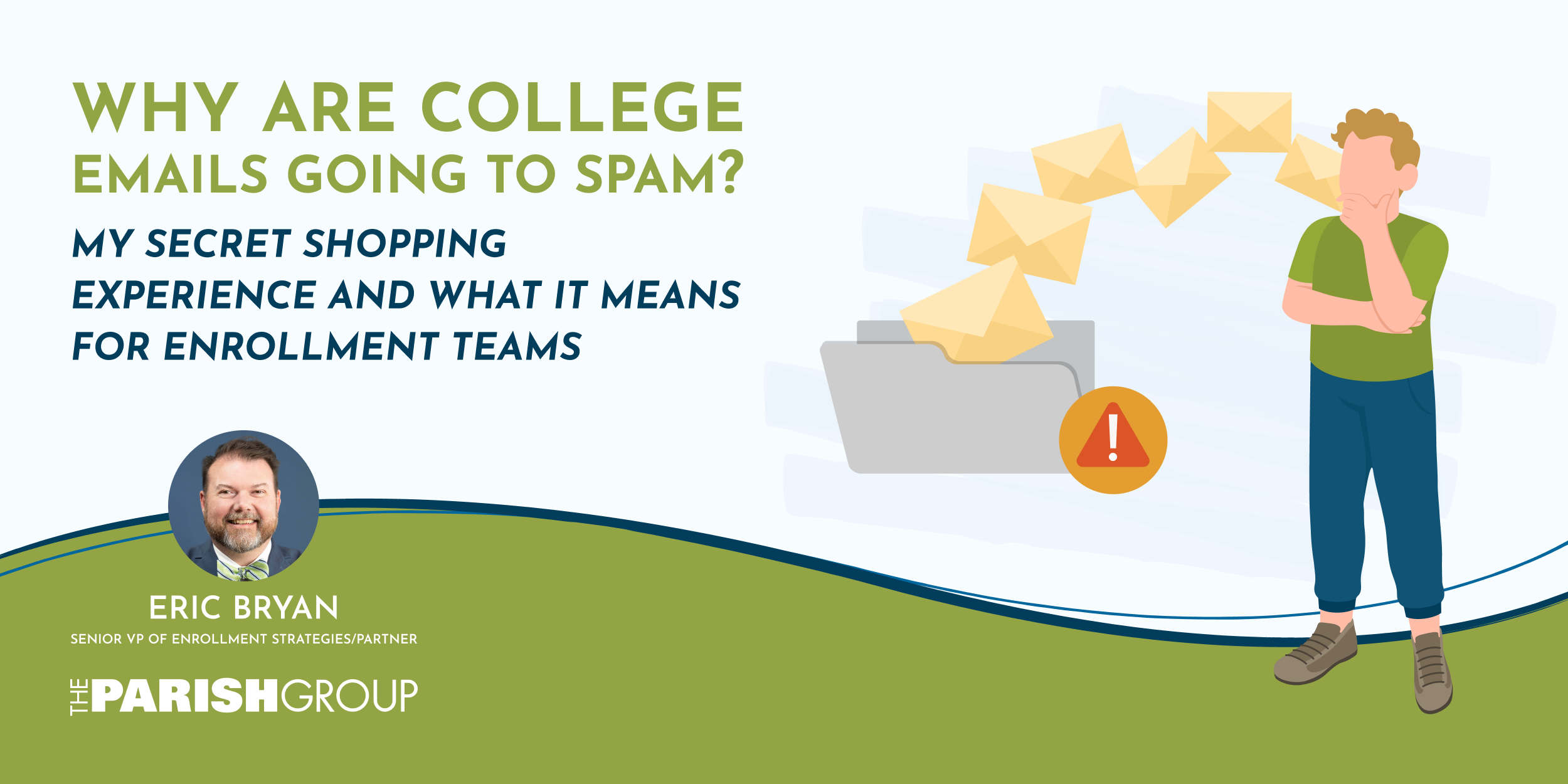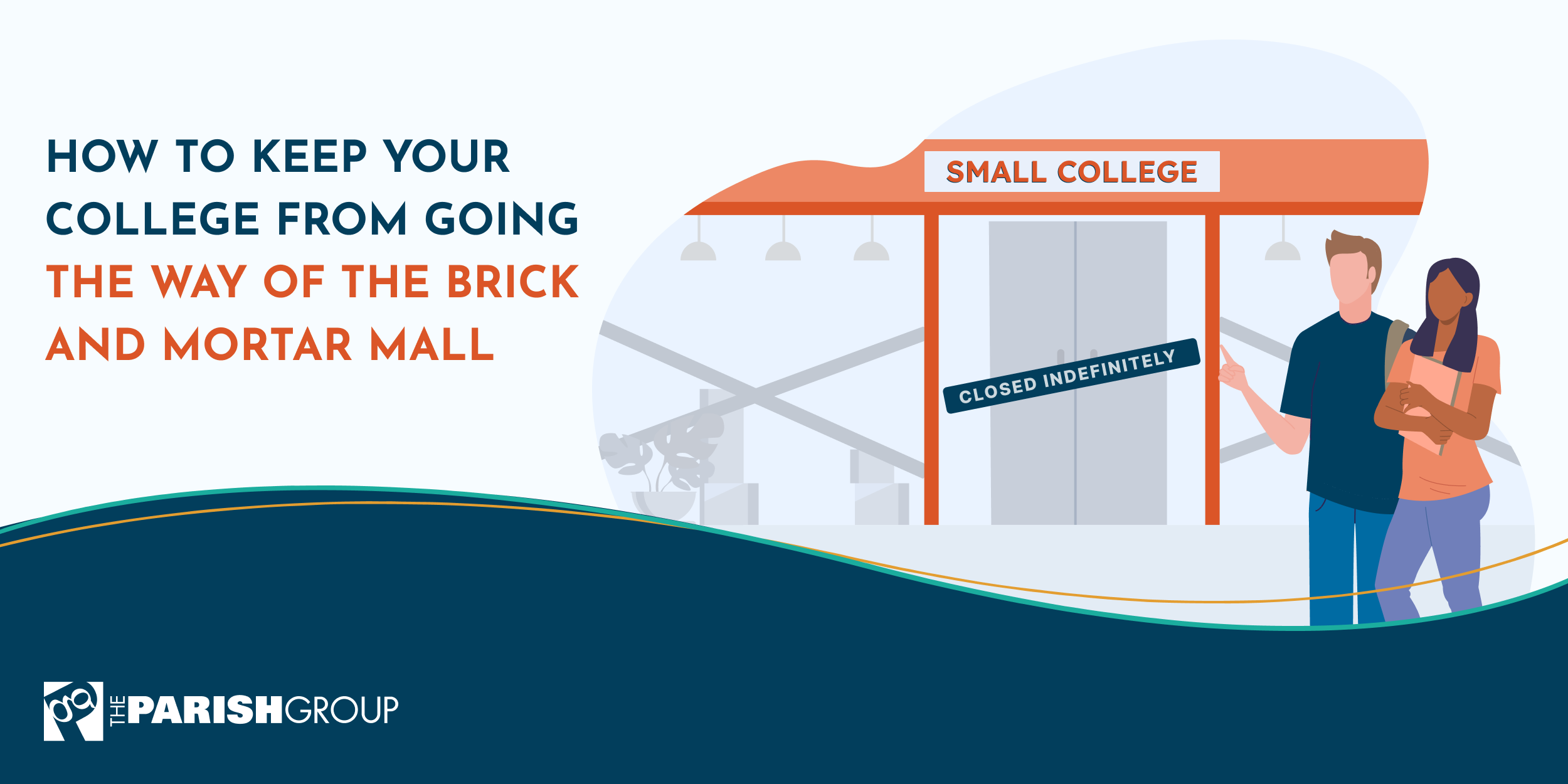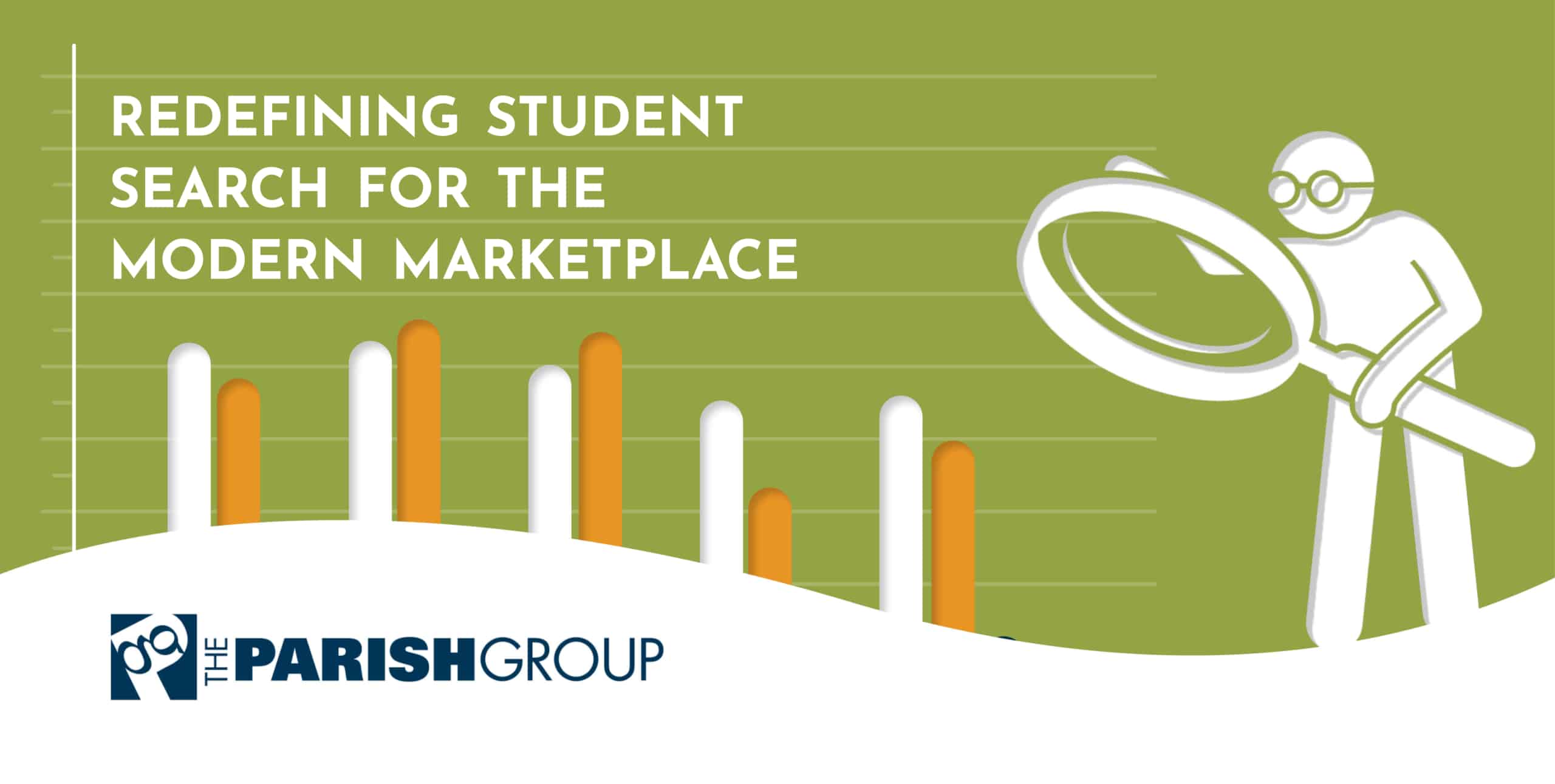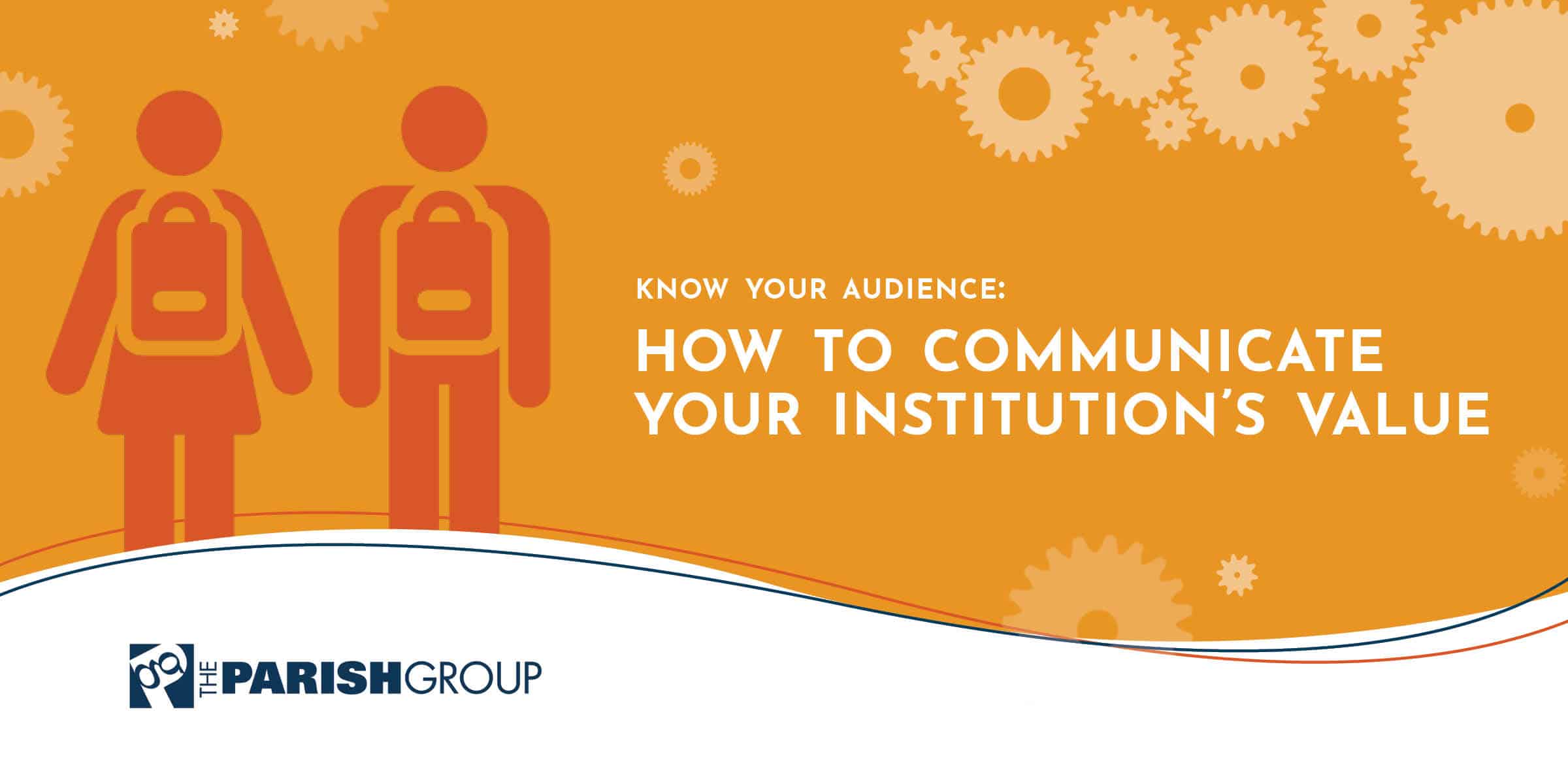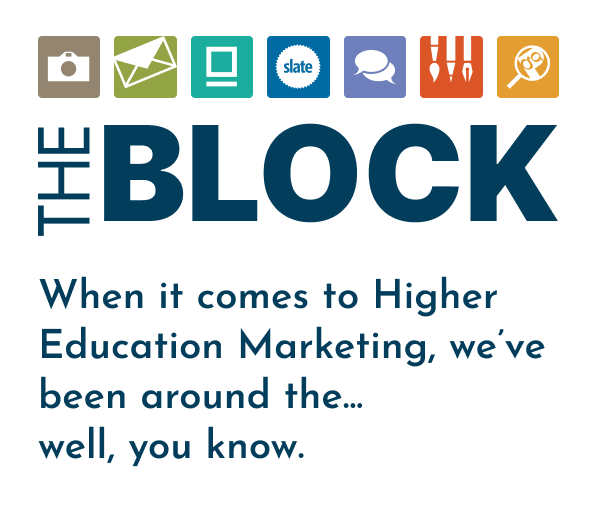
When’s the last time you went a full day without your phone… intentionally? Unless you were doing a digital ‘cleanse’, it’s safe to say most people have their phones on them 24/7.
Out of the 97% of Americans who own a mobile phone, 85% of those devices are smartphones, capable of connecting users to the vast online world at the touch of their fingers. And the average time that we spend on that phone daily? A whopping 4.25 hours.
Smartphones not only connect users to the internet, but also store location based data. As marketers, we’re well aware of this and have adapted our digital marketing strategy to use location-based advertisements. In the higher education marketing sphere, location-based marketing affords us the opportunity to reach prospective students in new and innovative ways.
Location-Based Marketing in Higher Education & Geofencing
Picture this: a high school senior visits a college campus and receives an advertisement about an applicable scholarship opportunity. A community college student walks to class and sees an ad for a nearby state school, prompting them to consider a new option for transferring. This practice is called geofencing.
Specifically, geofencing sends advertisements to users within a certain geographic range. It can range in size from a full city to a specific building on a college campus.
Geofencing can occur within specific phone apps. In this case, the user must opt-in and the downloaded app must have access to the internet to receive notifications. There is network based geofencing as well, which only requires a phone to be connected to the internet.
A Quick History on Location-Based Marketing
Location-based advertisements are nothing new. Think of sign twirlers outside their place of work or the fast-food billboard on the highway with directions to their establishment (Chick-fil-a, we’re looking at you). They take into consideration where a particular consumer is, how this consumer’s needs align with their product, and play on proximity.
In the 1990s, home computers became more commonplace, granting advertisers a new method for targeted location ads by utilizing IP addresses. Though cutting edge, this approach still had kinks to work out. Location didn’t always equate to a preferred audience— after all, those within a zip code only have so much in common.
The growing prevalence of mobile phones certainly upped the ante. No longer were marketers solely attached to a home address. Now, ads could be on the go with users.
But… remember the types of phones we had in the 90s? Bulky, mainly used for calling, and not the most accurate representation of physical location, especially compared to today.
Enter smartphones. When Apple dropped the iPhone in 2007, it’s safe to say the world changed. It definitely did for digital marketers. The smartphone’s GPS capabilities were far more precise than anything we’d seen before.
Reckoning with the Stay-at-Home Era in Higher Ed Digital Advertising
We rode this high for over a decade in the 2010s. Apple wasn’t the only company launching smartphones, and seemingly everyone— from adults to teens to even grandma— had a savvy cellular device.
But as all good things come to an end, 2020 happened. You can easily see how we run into a Looney Tunes painted tunnel here. College students are being told to stay home, finish the remaining spring semester online, with no real guess as if the world will recover come fall semester.
Events like college fairs and campus tours, which recruiters so heavily relied on for geofencing tactics, were no more. And though we’ve progressed with the vaccine rollouts, it can feel like we’re still standing in front of that tunnel, scratching our heads, holding up Wiley Coyote’s Help! sign.
How has the pandemic shifted our approach to location-based advertising? Did geofencing’s moment tumbleweed away?
Strategy Discussion with Tim Prusha of Little Foxes Marketing
To answer this question, I reached out to Tim Prusha, the President of Little Foxes Marketing. Little Foxes Marketing focuses on strategic digital marketing to fuel enrollment growth for higher ed institutions.
“[The pandemic] has not been positive for geofencing,” Prusha says. “We use it to cover college campuses and other physical locations where people gather. And people aren’t gathering anymore.”
Instead, interested students are looking at websites, scrolling through social media pages, and generally gathering their research online.
While you can’t geofence online, you can use a method called conquesting. It works similarly to keywords or lookalike campaigns.
Let’s say you’re perusing a well-known school’s website for more information on their exercise science program. Suddenly, you see an ad for an exercise science program at a smaller, private institution. This is a prime example of conquesting at work.
That smaller school is using the more established brand of their competitor to find interested students. Besides, there are countless colleges and universities, making it near impossible for a student to be familiar with all of them.
“This widens the top of the funnel for that lesser known school,” says Prusha. “It’s a great tactic for institutions with less exposure or colleges within a niche.” (Say a Christian school, an arts school, or an HBCU). “If your school has a spectacular graduate program, you can capitalize on the strength of higher-profile competitors all while lowering your cost per acquisition.”
Figuring Out What Works for Your Institution
If you feel your marketing strategy needs a refresher, The Parish Group can help. We offer full service marketing including research, search, consulting, creative, photography, and of course digital. Contact us at success@parishgroup.com or call our office at 828-505-3000.
Special thanks to our strategic partner Little Foxes Marketing and Tim Prusha.

